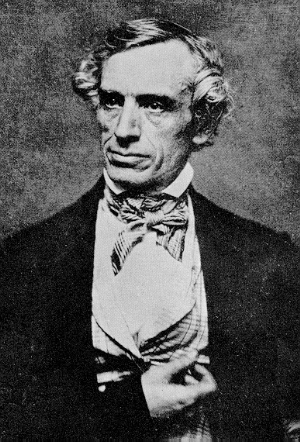
SAMUEL F.B.MORSE (1791-1872)
was a painter and founder of the National Academy of Design. In 1832, he conceived the basic idea of an electromagnetic telegraph while on a ship returning from Europe. Experiments with various kinds of electrical instruments and codes resulted in a demonstration of a working telegraph set in 1836, and the introduction of the circuit relay, making transmission possible for any distance. In the following year, a patent application was filed and in 1843 U.S. Congress voted $30,000 for an experimental line between Washington and Baltimore, U.S.A. With financial aid from Alfred Vail and Ezra Cornell, the line was completed and, on May 24, 1844, the historic message "What hath God wrought?" flashed across the line. After much litigation, prosperity finally came to Professor Morse. Inventions of his earlier days, such as water-pumps and marble-carving machines, had proved of little worth. Morse had demonstrated the practicality of telegraph through a submarine wire two years before he first sent his epochal message from Washington to Baltimore in 1844. He advised Field on the Atlantic cable and accompanied the expedition of 1857.
This excerpt was copied from "The Atlantic Cable" written by Bern Dibner.
